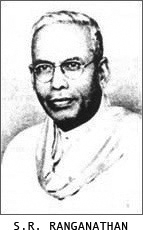PERSPECTIVE

Over time, libraries have enjoyed a special privilege of determining which published materials are deemed culturally valuable and worth preserving. Materials that are kept within a collection are largely considered to be more useful than those that are removed. Books and other materials are removed from collections for a variety of different reasons: space is in short supply, materials become physically worn, information becomes outdated, and new editions are produced. Whatever the ultimate (and presumably sound) motivation for weeding a collection may be, one result is that a tremendous amount of printed material disappears from the public realm once it leaves the public library.
The Reanimation Library is particularly interested in the loss of visual information that accompanies the process of weeding. Collection development policies generally assign little weight to the visual dimension of a work, unless that work happens to be graphically driven (i.e. a book profiling a visual artist, graphic design, or similar materials of an explicitly visual nature). Most library collection development policies prioritize the acquisition of items that contain currently relevant textual information, and replace items where that information is lacking or out of date. This protocol, coupled with the continual production of newer editions, creates a growing fossil record of outdated books—a veritable feast for image archaeologists. The Reanimation Library is actively engaged in building a collection of materials that are rich in visual information regardless of the currency of their textual content. The library serves as a repository and, more pertinently, an access point for such materials.
Artists, historians, writers, musicians, and scholars ground their creative and intellectual work in the images, ideas, words, and sounds of previous generations. Pastiche, collage, and sampling are fundamental tools of contemporary creative activity. The Reanimation Library presents a fertile environment for patrons to engage with the work of the past in creative, recombinant ways. Shiyali Ramamrita Ranganathan's first law of library science states that "books are for use." The Reanimation Library believes that a book's intended use is not its only use and encourages visitors to find—and share—their own uses for the books in its collection.
